前言
栈与队列是数据结构中最常见的数据结构之一,因其特性往往可以将问题简单化,在使用栈与队列时要牢记:栈:先进后出,队列:先进先出!,写代码时必要时刻可以增加头结点,或者末尾留空,以简化操作。本篇博客主要为了回顾一下,顺序栈,链式栈,顺序循环队列,链式循环队列。以便于后期的复习!
可以先看一下栈与队列通常考什么:

栈–思想
stack: a pile of objects
翻译:一垛物品
维基百科:堆栈(英语: stack)又称为栈或堆叠
特性:先进后出 (First In Last Out)FILO
考点:主要靠顺序栈,链式栈基本不考!
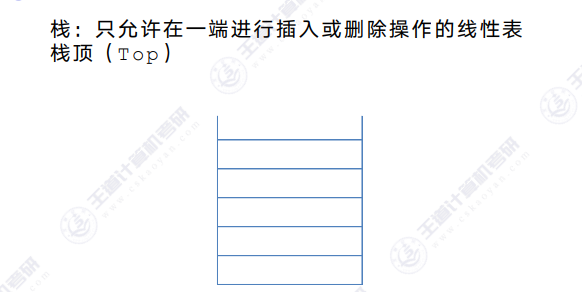
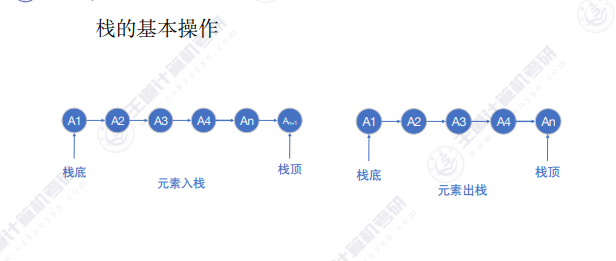
栈–代码实战
顺序栈(***)重点:
顺序栈通常会设置一个栈顶数值指针top用于记录当前栈顶的位置,可以将栈顶初始位置设置到-1,当有元素入栈时使用条件++top,这样top所指的位置就是栈顶元素。出栈时使用条件top–;实现代码如下:
//
// Created by Zhu Shichong on 2023/1/9.
//
#include <stdio.h>
#include<stdlib.h>
#define MaxSize 50
#define bool int
#define true 1
#define false 0
typedef int ElemType;
//数组类型
struct myList{
ElemType data[MaxSize];
int top;
};
typedef struct myList myList;
bool insert_stack(myList *stack,ElemType e){
if (stack->top==MaxSize-1){
return false;
}
stack->data[++stack->top]=e;
return true;
}
ElemType pop_stack(myList *stack){
if(stack->top==-1){
return false;
}
return stack->data[stack->top--];
}
int main() {
myList *stack=(myList*)malloc(sizeof (myList));
stack->top=-1;
int a;
for(int i;i<5;i++){
scanf("%d",&a);
insert_stack(stack,a);
}
while(stack->top!=-1){
printf("%d ", pop_stack(stack));
}
printf("\n");
return 0;
}
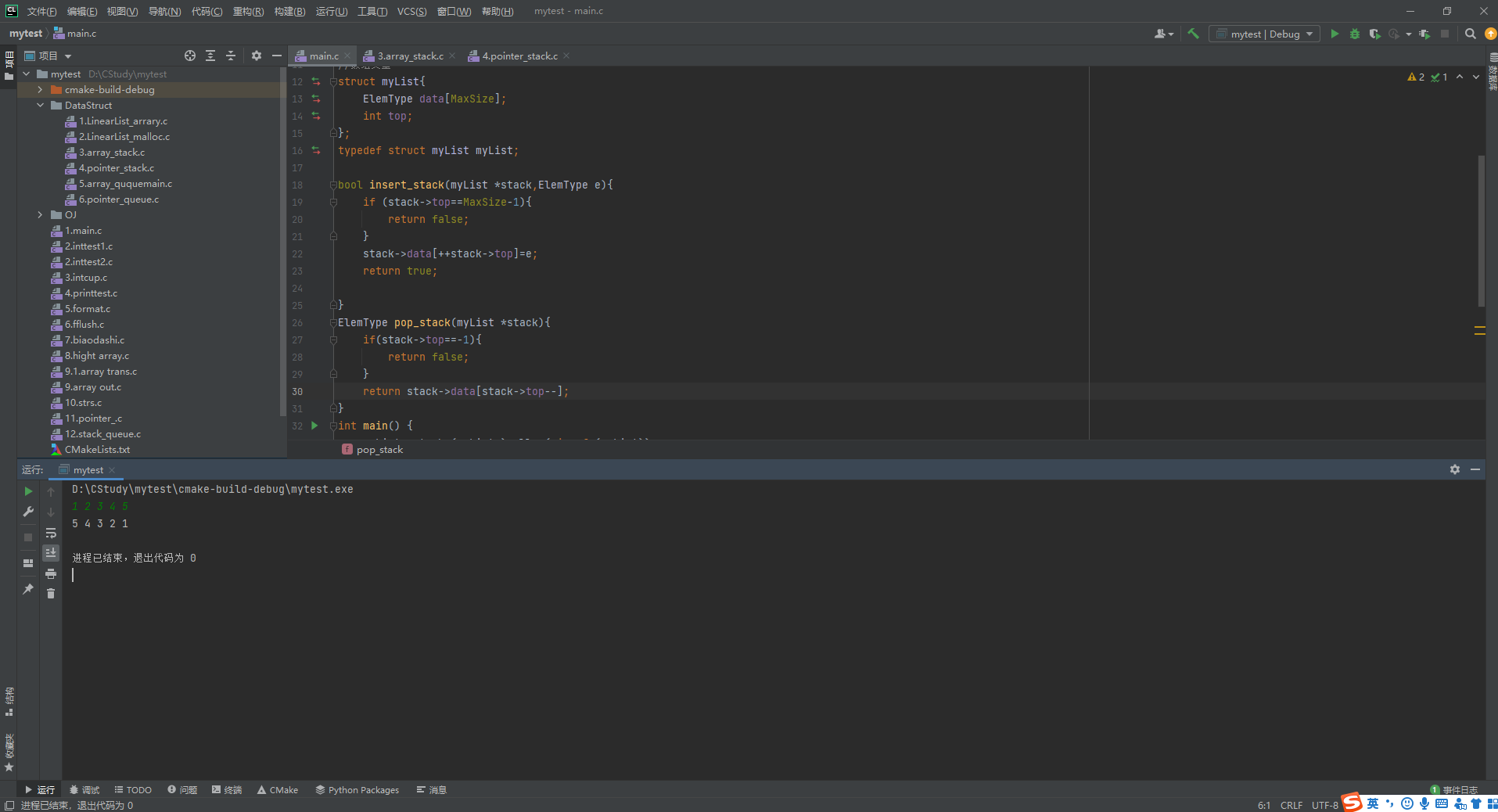
链表栈(虽不常考,但也实现了一番):
//
// Created by Zhu Shichong on 2023/1/9.
//
#include <stdio.h>
#include<stdlib.h>
#define bool int
#define true 1
#define false 0
typedef int ElemType;
//数组类型
struct myList{
ElemType data;
struct myList *next;
};
typedef struct myList myList;
bool insert_stack(myList *stack,ElemType e){
myList *tail=(myList*) malloc(sizeof (myList));
tail->data=e;
tail->next=stack->next;
stack->next=tail;
return true;
}
ElemType pop_stack(myList *stack){
if(stack->next==NULL){
return false;
}
myList *p;
ElemType e;
p=stack->next;
e=p->data;
stack->next=stack->next->next;
free(p);
return e;
}
int main() {
myList *stack=(myList*)malloc(sizeof (myList));
stack->next=NULL;
int a;
for(int i;i<5;i++){
scanf("%d",&a);
insert_stack(stack,a);
}
while(stack->next!=NULL){
printf("%d ", pop_stack(stack));
}
printf("\n");
return 0;
}
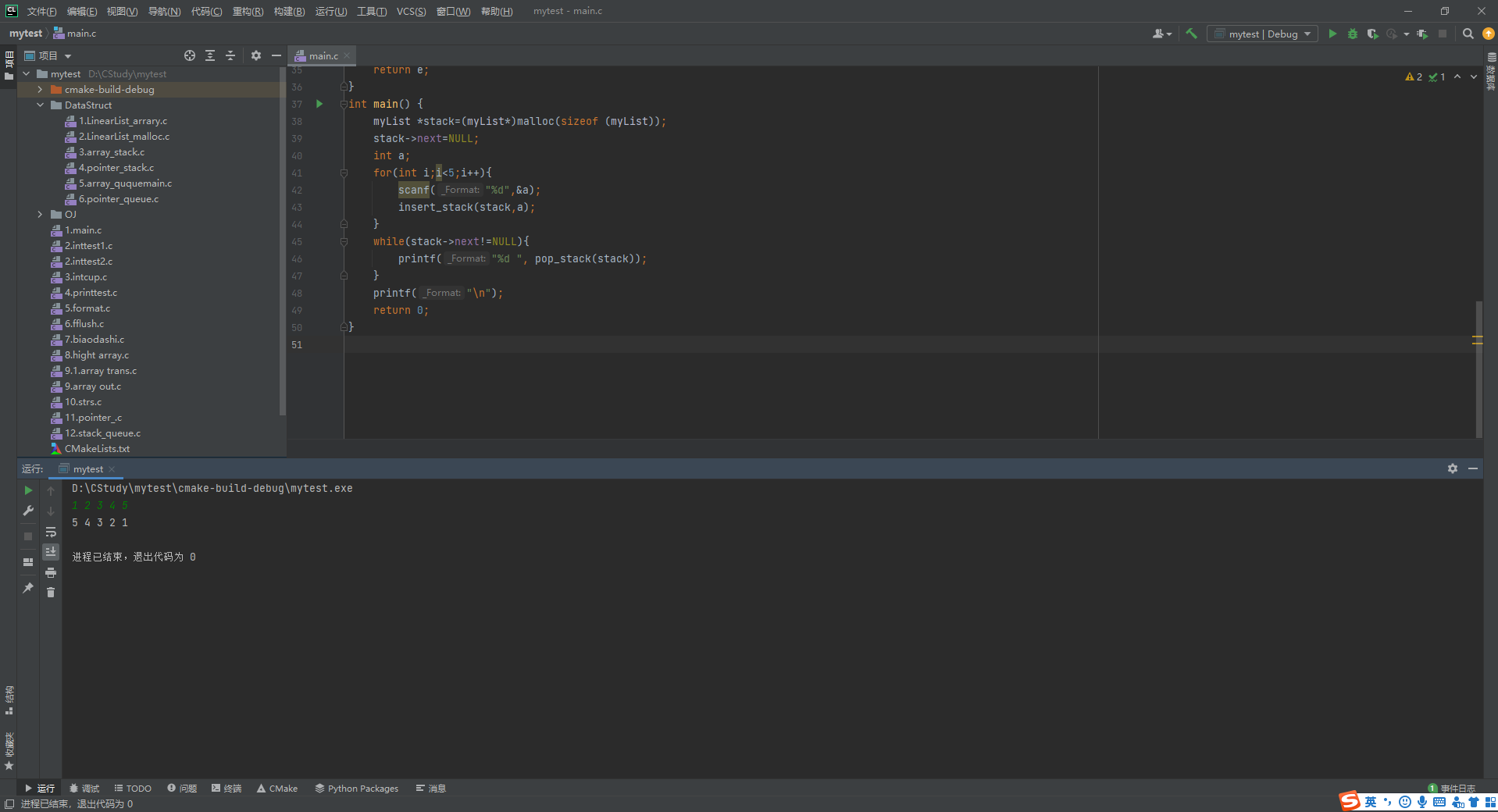
队列–思想
队列(Queue)简称队,也是一种操作受限的线性表,只允许在表的一端进行插入,而在表的另一端进行删除。向队列中插入元素称为入队或进队;删除元素称为出队或离队。FIFO
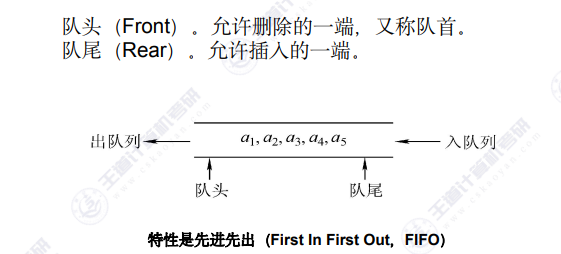
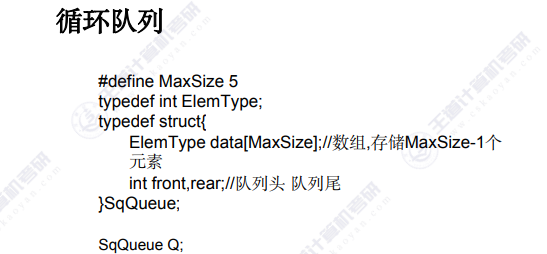
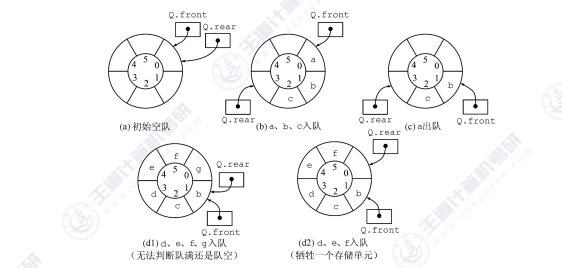
循环队列是队列的常考点,在解决这种问题之前只需要记住,将带有元素下标指针的判断条件与运算响应部分改为(font+1)%MaxSize,或者(tail+1)%MaxSize即可!
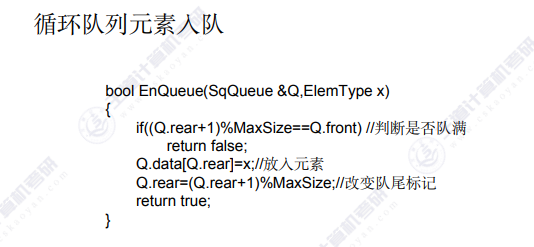
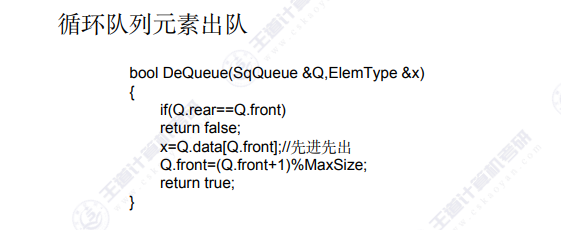
在此,我也进行了顺序循环队列的实现:
队列–代码实战
//
// Created by Zhu Shichong on 2023/1/9.
// 循环链表队列
//
#include <stdio.h>
#include<stdlib.h>
#define MaxSize 6
#define bool int
#define true 1
#define false 0
typedef int ElemType;
//数组类型
struct myList{
ElemType data[MaxSize];
int font;
int tail;
int maxsize
};
typedef struct myList myList;
//这样写,最后一个位置是留空的
bool push_queue(myList *tail,ElemType e){
if((tail->tail+1)%tail->maxsize==tail->font){
return false;
}
tail->data[tail->tail]=e;
tail->tail=(tail->tail+1)%tail->maxsize;
return true;
}
ElemType pop_queue(myList *queue){
if(queue->tail==queue->font){
return false;
}
ElemType e;
e=queue->data[queue->font];
queue->font=(queue->font+1)%queue->maxsize;
return e;
}
int main() {
myList *queue=(myList*)malloc(sizeof (myList));
queue->font=queue->tail=0;
queue->maxsize=MaxSize;
ElemType a;
for(int i=0;i<5;i++){
scanf("%d",&a);
push_queue(queue,a);
}
for(int i=0;i<3;i++){
printf("%d ", pop_queue(queue));
}
printf("\n");
for(int i=0;i<5;i++){
scanf("%d",&a);
push_queue(queue,a);
}
while(queue->font!=queue->tail){
printf("%d ", pop_queue(queue));
}
printf("\n");
return 0;
}
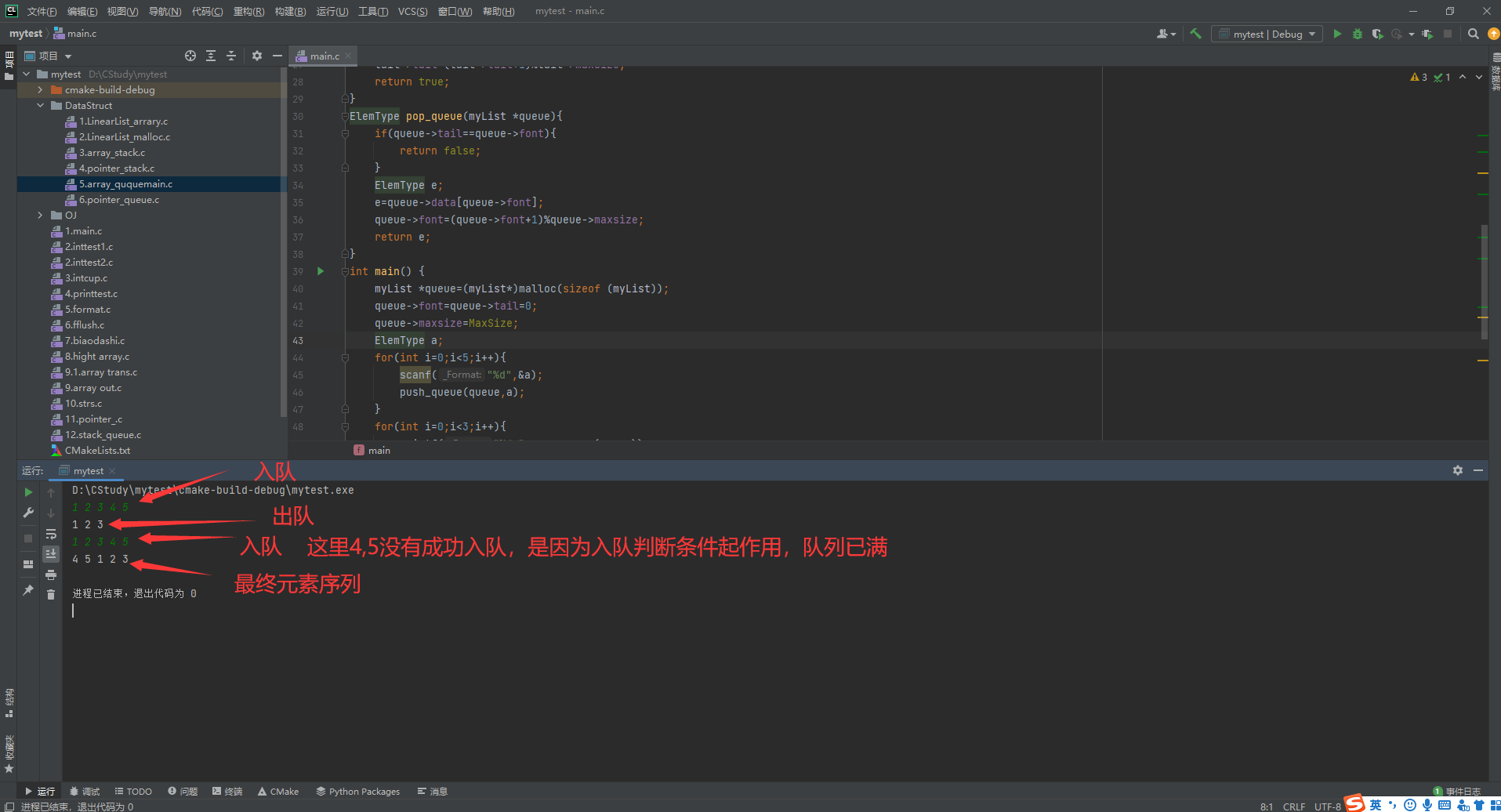
真题实战!
顺序循环队列是常考的内容,但是链式循环队列也会考,就像文章开头那道19年的题,虽然没有让写代码,只让写思路,但是有了思路写代码就会很快,会写代码思路就很清晰,所以下面代码对链式循环队列进行了实现!

(1)该队列应选择链式存储结构(涉及到空间开辟)。
(2)初始状态,一个头节点指向自己,队空时:head==tail,队满时:tail->next==head
(3)第一个元素入队后 head->tail(存第一个元素数据)->head
(4)基本操作过程如下:
//
// Created by Zhu Shichong on 2023/1/9.
// 循环链表队列
//
#include <stdio.h>
#include<stdlib.h>
#define bool int
#define true 1
#define false 0
typedef int ElemType;
//数组类型
struct myList{
ElemType data;
struct myList *next;
};
typedef struct myList myList;
bool push_queue(myList **queue,myList **tail,ElemType e){
if((*tail)->next==*queue){
(*tail)->data=e;
myList *p=(myList*) malloc(sizeof (myList));
p->next=*queue;
(*tail)->next=p;
(*tail)=p;
printf("malooc!!!\n");
}else{
(*tail)->data=e;
*tail=(*tail)->next;
}
return true;
}
ElemType pop_queue(myList **queue,myList **tail){
if(*queue==*tail) {
return false;
}
ElemType e;
e=(*queue)->data;
(*queue)=(*queue)->next;
return e;
}
int main() {
myList *tail,*queue=(myList*)malloc(sizeof (myList));
queue->next=queue;
tail=queue;
int a;
for(int i=0;i<5;i++){
scanf("%d",&a);
push_queue(&queue,&tail,a);
}
for(int i=0;i<3;i++){
printf("element out:%d\n", pop_queue(&queue,&tail));
}
for(int i=0;i<5;i++){
scanf("%d",&a);
push_queue(&queue,&tail,a);
}
printf("\n");
return 0;
}
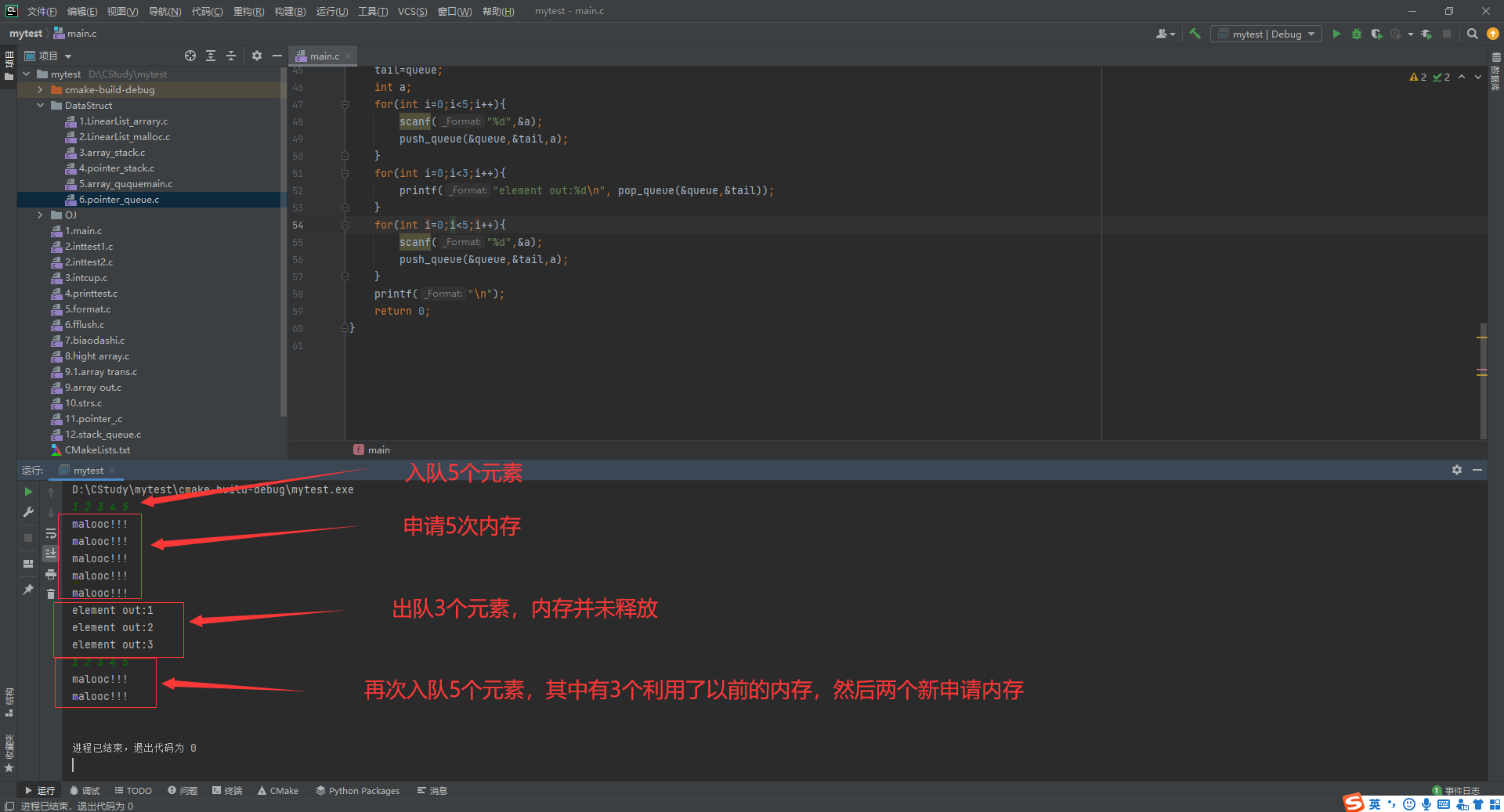

今天的内容就到此结束了,后续复习数据结构的时候估计会对栈与队列进行详细的总结!